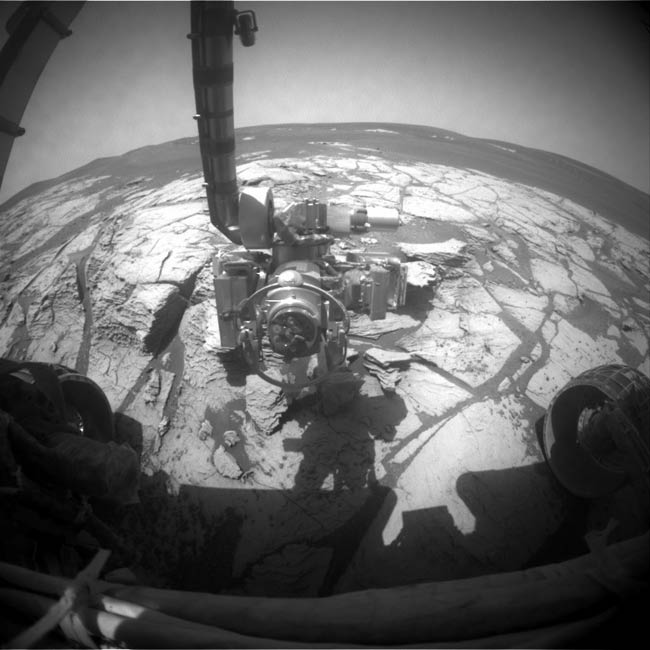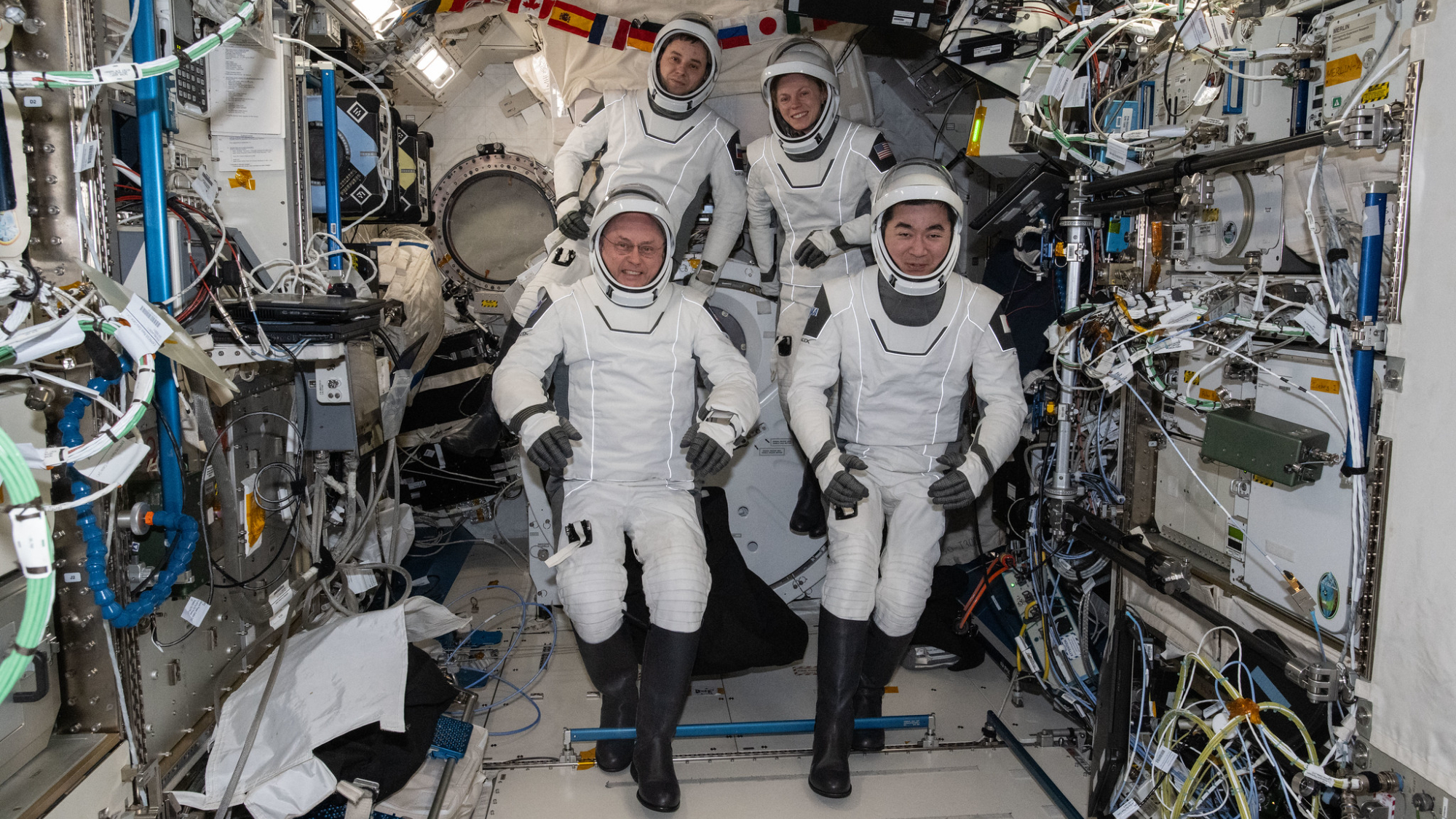NASA’s Opportunity Rover Flexes Robotic Arm

NASA's Mars rover Opportunity has sucessfully reached out toward a Martian rock with its robotic arm, overcoming a motor glitch that prevented deployment last month.
Opportunity unstowed its instrument-laden robotic arm Tuesday, aiming the multi-jointedappendage straight ahead towards a rock outcrop jutting from a crater at itsMeridiani Planum landing site, the mission's project manager said.
"It wentfine...we successfully put an instrument on the rock," Jim Erickson, projectmanager for the Mars ExplorationRover mission at NASA's Jet Propulsion Laboratory (JPL), told SPACE.com."The team did a great job but we've got more work to do."
Stalledscience
Opportunity'sroboticarm - which carries four instruments designed to photograph, brush, grindand determine the composition of Martian rocks - stalled in its stowed positionon Nov. 25, preventing active study of the nearby outcrop at its Erebus Craterlocation. A problematic shoulder joint motor, which swings the arm out from itsstowed position tucked under the rover, appeared to be the cause.
"We werefearful for a time that the motor may have failed permanently," said SteveSquyres, principal investigator for the rover mission at Cornell University,during a Dec. 12 discussion at the American Museum of Natural History in NewYork City. "If that were the case, we'd never be able to use the arm again."
But on Dec.8, rover engineers managed to move thearm slightly. The motor glitch appears to be the result of a broken wire in oneof nine windings - or coils - inside the shoulder joint, Erickson said. By applyinga higher voltage than normal to the windings, the joint moved, he added.
Breaking space news, the latest updates on rocket launches, skywatching events and more!
"We'redeveloping a mode for keeping the arm out in front," Erickson said, adding thatengineers are now studying various positions in which to stow the arm andensure its continued use as a science tool. "We'll essentially stow it now byputting the instrument pack up over the rover's deck."
Ericksonsaid more analysis and arm motor tests are planned in order to determine thebest configuration for the arm during drives.
Martianyear milestone
Like itsrobotic twin Spirit,which is currently descending Husband Hill in Mars' Gusev Crater and headingtoward a target dubbed "Home Plate," Opportunity has spent more than oneentire Martian year - about 687 Earth days, or 670 Martian sols - exploringthe red planet. Opportunity's red planet anniversary occurred on Dec. 12 andset a new milestone for the Mars rover expedition, which had a primary missionthat originally spanned just 90 Martian days.
"I used tothink that dust on our solar arrays was going to be the limit for these rovers,I don't think that anymore," Squyres said. "I think, instead, that something isgoing to break. We have a lot of moving parts and electrical parts on theserovers."
Squyresadded that the success of Spirit and Opportunity has changed the way he looksat Mars.
"[Beforelaunch] it just seemed impossibly far away, it seemed unreachable," Squyressaid of the red planet. "Tonight, I go out knowing our rovers have been there awhole Martian year...it's a much more familiar planet. We know the place."

Tariq is the award-winning Editor-in-Chief of Space.com and joined the team in 2001. He covers human spaceflight, as well as skywatching and entertainment. He became Space.com's Editor-in-Chief in 2019. Before joining Space.com, Tariq was a staff reporter for The Los Angeles Times covering education and city beats in La Habra, Fullerton and Huntington Beach. He's a recipient of the 2022 Harry Kolcum Award for excellence in space reporting and the 2025 Space Pioneer Award from the National Space Society. He is an Eagle Scout and Space Camp alum with journalism degrees from the USC and NYU. You can find Tariq at Space.com and as the co-host to the This Week In Space podcast on the TWiT network. To see his latest project, you can follow Tariq on Twitter @tariqjmalik.
